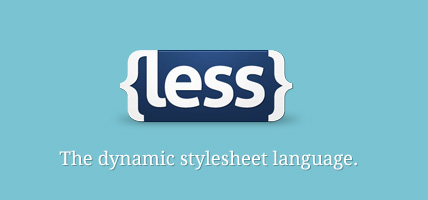LESS (Stylesheet Language)
- Details
- Category: T3 Bs3 Demo Content
- Published: Wednesday, 04 December 2019 04:08
- Written by Super User
- Hits: 713

LESS is a dynamic stylesheet language designed by Alexis Sellier. It is influenced by Sass and has influenced the newer "SCSS" syntax of Sass, which adapted its CSS-like block formatting syntax.
LESS is open-source. Its first version was written in Ruby, however in the later versions,use of Ruby has been deprecated and replaced by JavaScript. The indented syntax of Less is a nested metalanguage, as valid CSS is valid Less code with the same semantics.
LESS provides the following mechanisms: variables, nesting, mixins, operators and functions.
LESS can run on the client-side (Internet Explorer 6+, WebKit, Firefox) and server-side, with Node.js or Rhino (JavaScript engine).[2]
Variables
Less allows variables to be defined. Less variables are defined with an at sign(@). Variable assignment is done with a colon (:).
During translation, the values of the variables are inserted into the output CSS document.
Mixins
Mixins allow embedding all the properties of a class into another class by including the class name as one of its properties, thus behaving as a sort of constant or variable. They can also behave like functions, and take arguments. CSS does not support Mixins. Any repeated code must be repeated in each location. Mixins allow for more efficient and clean code repetitions, as well as easier alteration of code.
LESS has a special type of ruleset called parametric mixins which can be mixed in like classes, but accepts parameters.
Nesting
CSS does support logical nesting, but the code blocks themselves are not nested. Less allows to nest selectors inside other selectors. This makes inheritance clear and style sheets shorter.
Functions and operations
Less allows operations and functions. Operations allows addition, subtraction, division and multiplication of property values and colors, which can be used to create complex relationships between properties. Functions map one-to-one with JavaScript code, allowing manipulation of values.
Comparison to Sass
LESS is inspired by Sass. Sass was designed to both simplify and extend CSS, so things like curly braces were removed from the syntax. LESS was designed to be as close to CSS as possible, so the syntax is identical to existing CSS code. As a result, existing CSS can be used as valid LESS code.
The newer versions of Sass also introduced a CSS-like syntax called SCSS (Sassy CSS).
Use on sites
LESS can be applied to sites in a number of ways. One option is to include the less.js JavaScript file to convert the code on-the-fly. The browser then renders the output CSS. Another option is to render the LESS code into pure CSS and upload the CSS to a site. With this option no .less files are uploaded and the site does not need the less.js JavaScript converter.
From Wikipedia, the free encyclopedia





